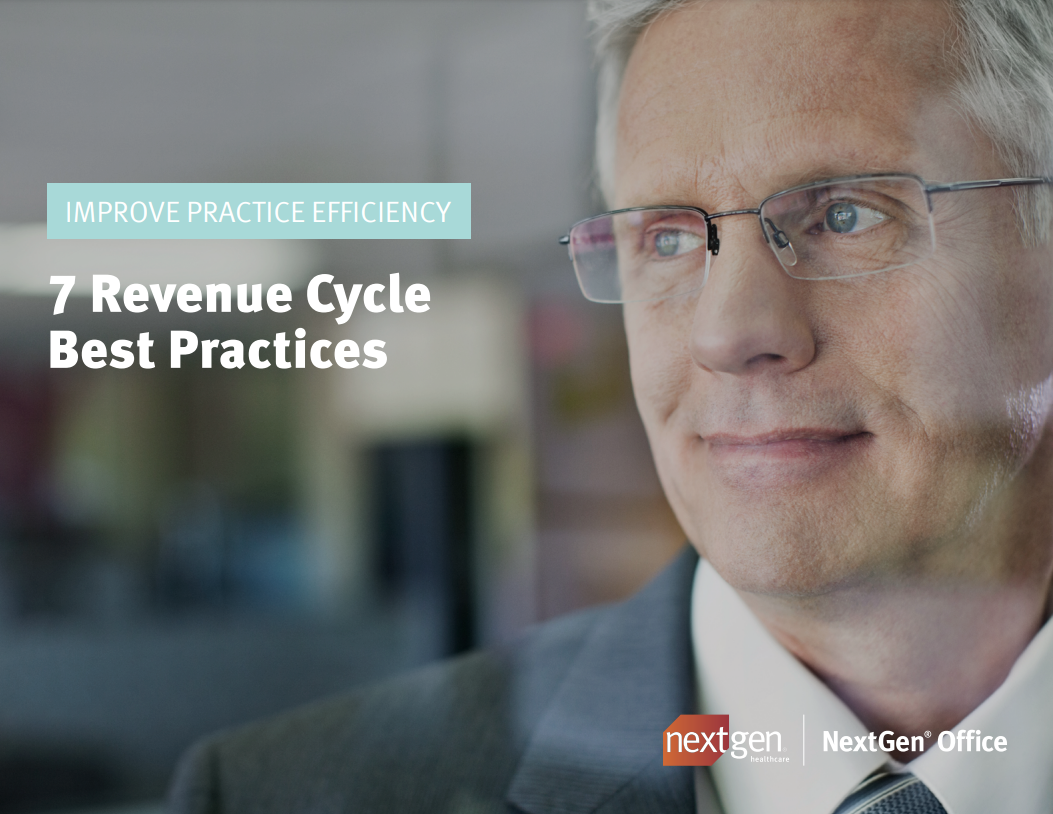Improve Practice efficiency: 7 Revenue Cycle best practices
Now more than ever—consider a new approach to your revenue cycle Effective revenue cycle management has become more critical for ambulatory medical...
4 min read
AVS Medical : Apr 19, 2023 12:00:00 AM

A medical practice’s cash flow is an important gauge of its overall financial health, but there are additional metrics that will highlight areas of concern where improvement may be needed to ensure long term financial success.
This post identifies several important key performance indicators or KPIs that will provide you with a better, more comprehensive view of your practice’s overall Revenue Cycle.
Key Performance Indicators or KPIs are metrics that allow you to compare your practice’s revenue cycle to industry standards. Giving you the information you need as the business owner to gauge how you’re performing compared to industry standards.
KPI 1 - Adjusted Collection Rate
Definition - What percentage of your practice’s total charges are getting paid?
Here’s how to calculate your collection rate:
You should be setting the expectation that your ACR is above 95%
Tips to Improve your ACR
PRO TIP: Run a daily report to track that all scheduled appointments for the day have an associated claim.
Knowing your expected time for payment allows you to accurately project your cash flow - essential for any business or medical practice.
DOWNLOAD THE E-BOOK: A SIMPLE GUIDE TO PRACTICE MANAGEMENT AND MEDICAL BILLING
KPI 2 - Know your Clean Claims Rate
Definition - The percentage of claims sent to payers with no problems or defects and without manual intervention
Here’s how to calculate your clean claims rate:
Your goal should be to have a clean claims rate of 95% or higher. (Yours may vary by type of practice/specialty)
Monitor your practices clean claims rate on a monthly or quarterly basis to discover problems on front end claims submission and medical coding errors
PRO TIP: Eliminate demographic and insurance errors by using your EHR’s automated eligibility verification tools that auto-create the patient chart with the correct information.
KPI 3 - Days in A/R
Definition - The average length of time it takes for you to be reimbursed for your services.
Here’s how to calculate your Days in A/R:
Your goal should be somewhere in the 18 to 32 day range
Pro Tip: Monitor days in A/R monthly or more frequently if your practice is experiencing any business-related changes.
Knowing and monitoring your practices days in A/R will give you a baseline to measure your claims process improvements against going forward
KPI 4 - Denial Rate
Definition - Claim denial rate is the percentage of claims denied or rejected by all payers during a specific time period. This KPI measures the effectiveness of your Revenue Cycle Management processes.
Here’s how to calculate your Denial Rate:
Based on a recent study the AAFP estimates the average claim denial rate to be between 5% and 10% for clinics and could be as high as 15% to 25% for some. According to a study conducted by The Advisory Board 90% of denied claims are preventable. A study published by the MGMA indicates that up to 65% of all denied claims are never worked due to not enough staff resources and or staff time to undertake the tedious process of calling payers.
A denial rate of less than 5% should be your target/goal.
Upgrade your EHR technology for better Revenue Cycle Management
Pro Tip: Leverage EHR Technology to Reduce Denial Rates
One of the most common causes of denied claims is missing or incomplete patient demographic information. Use your EHRs eligibility tool to capture the most current and correct info. Make sure your EHR has automated claim scrubbing applied before the claims are sent.
KPI 5 - Bad Debt
Definition - Uncollected patient responsibility that is unrecoverable is referred to as bad debt.
Tracking and analyzing bad debt data gives you valuable insight into the effectiveness of your practice’s front desk and overall collection efforts from patients.
Here’s how to calculate your Bad Debt average:
Knowing your bad debt average and keeping it low indicates efficiency in the revenue cycle process, especially with regard to patient collections.
Lagging vs Leading Indicators
The KPIs we’ve discussed so far are lagging indicators. In other words we’re looking backwards in time to determine our revenue cycle health. But there are several, equally important leading indicators that can also give us insight on the financial direction and health of the revenue cycle.
Knowing and using KPIs will result in a healthier revenue cycle, improved cash flow, a shorter time from visit to cash and an overall better practice.
KPIs are measurable, objective values. They enable you to develop precise, obtainable business goals and measure your progress toward meeting these goals. If you can improve processes at the front desk and in the back office as a result, it will help with cash collections—and provide a better experience for physicians, staff, and patients.
We’ve all heard the expression, “work smarter, not harder.” KPIs are the key to working smarter in the business of medicine
Learn More About Our RCM Service!

Now more than ever—consider a new approach to your revenue cycle Effective revenue cycle management has become more critical for ambulatory medical...

Medical offices today face new challenges to profitability and sustainability, especially in the wake of the recent COVID-19 public health emergency....

Whether you use Medisoft, Lytec or Practice Partner, every practice’s Revenue Cycle Management is the same. It starts when a patient sets an...